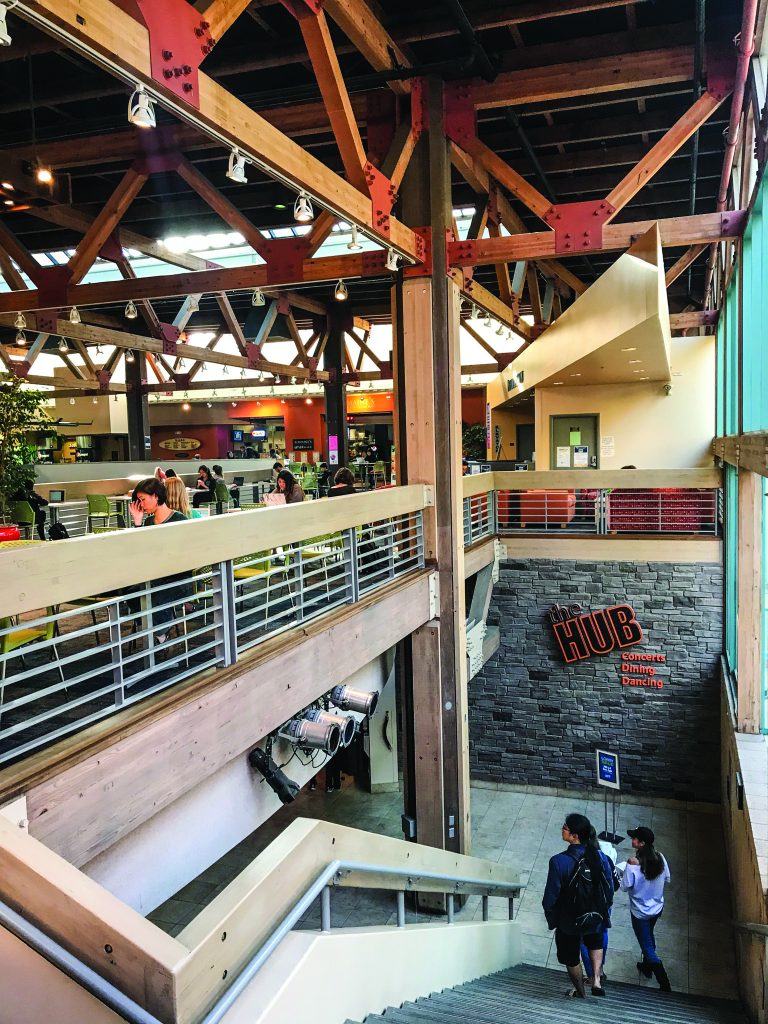
Lauren Marnel Shores
Campus Beat Reporter
Associated Students President Hieu Le is leading a signature gathering drive to put a proposal for renovations to the University Center on this year’s ballot. To pay for the $48 million project, students could face up to an additional $21 per quarter in student fees for the first four years during the planning phase, and $99 per quarter once the renovations are complete.
The proposed renovations includes more classrooms for CLAS, student study spaces, and meeting places for clubs in the evening, as well as expansions to CAPS and the Food Bank. In addition, there are plans to create a demonstration kitchen to educate students how to cook nutritiously, an innovation lab for students to invent outside of the classroom, Associated Students Senate chambers, and a pub for student activities.
“The retail shopping mall feel of the UCen would no longer exist,” said Le. “So some of these businesses that are operating at a deficit will be replaced by these student departments and services who have lower operating costs and don’t need to generate revenue to make up that cost.”
The project started as a “grassroots initiative” in 2011 by students and campus administration “to address dire needs that students were facing,” such as lack of study spaces and long waiting times to see a counselor, explained Le.
“Because of increased enrollment and lack of state funding, students are competing for spots to study in the library,” Le said. “They’re competing to make an appointment with counselors, and they’re competing for seats in a classroom. This University should have the proper resources and tools available for us to succeed and definitely not in spite of another student losing out. We should all have proper access.”
Skeptics have questioned whether the expansion of resources through further development of the university center is truly the most efficient use of funding. For example, CAPS already has six other locations around UCSB beyond its main office, yet still is under resourced due to the fact that students insist on using the main office for initial appointments, explained Turi Honegger, Acting Co-Director of CAPS.
While Honegger stated that he sees value in putting funding into the university center renovations, improving resources such as CAPS would be benefitted by adding more space and staff to the pre-existing building.
Furthermore, opposition has stated that these renovations are in contradiction to Le’s campaign of “GauchoServe,” in which he ran on the promise of lowering student fees while generating more revenue for programs and services. Indeed, multiple members of A.S. Senate expressed unease at the raised costs, particularly in the face of an upwards trend in tuition and student fees.
According to the Common Data Set on the Office of Budget and Planning Website, 12,705 (60%) of full time undergraduate students, and 141 (37.5%) less than full time undergraduate students, were “determined to have financial need” in 2016-2017. Of that number, 79.3 percent of full time and 69.7 percent of less than full time were granted any need based aid, and only 18 percent had their needs fully met.
Le explained that in order to help students who can’t afford the increase, there is a $25 return to aid built in to the fee in order to redistribute $50 million in financial aid to students over the course of 30 years. In this way, “a third of students will be able to subsidize the two thirds of students who are financially needy,” said Le.
In addition, Le stated that the $21 and $99 per quarter fee increases are a “worst case scenario” and will vary depend on the amount of funding the university is able to secure. “We have solidified a partnership with the UCSB Office of Development,” said Le. “They’re developing a fundraising plan to identify and secure big donors for this project, which will largely offset student fees.
Currently, funding is still fairly uncertain, Le explained that donor dollars typically come in during the design and programming phase of a project. He said, however, that those who run the fundraising within the university expect to raise $10 to $20 million in outside money based on their experience with other campus projects. For every $400,000 in donor funding, there will be a $1.50 fee reduction from the proposed numbers.
“The students have asked for this, and I worked over the course of several months to develop a proposal and a plan,” said Le. “I think ultimately what is being proposed will be subject to their vote and for their approval, and at the end of the day, if they vote yes, that’s great and I think it’s something that will definitely benefit them. If they vote no then that’s up to their discretion.”










